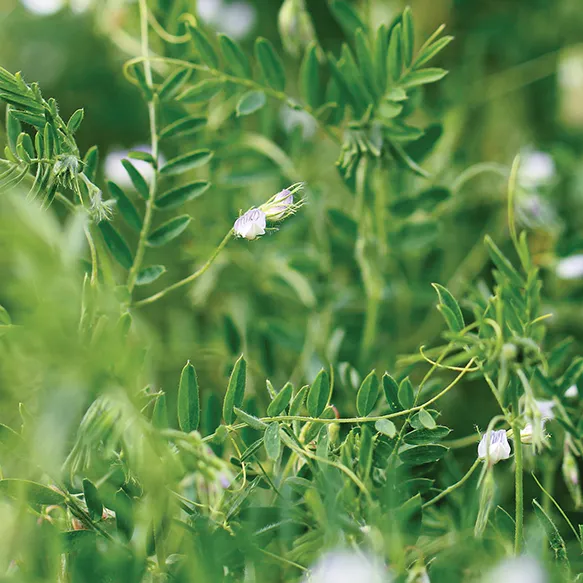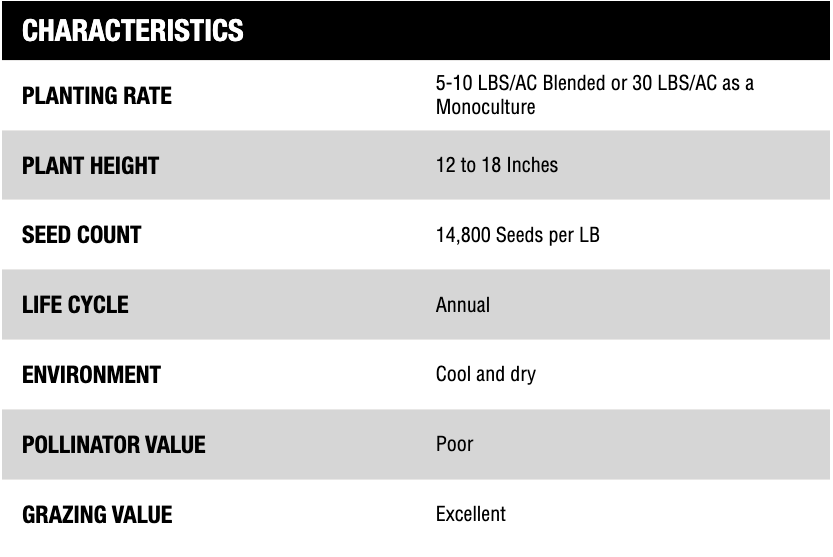
Lentils
Lens Culinaris
Lentils are slender, semierect, cool season annuals grown across the world for human consumption. Individual plants may vary from single stems to vigorous, bushy forms in dense or sparse stands that normally reach 12-18 inches tall. Flowers are small, less than ½ inch long, and white, pale purple, or purple black. Flowering in lentils proceeds acropetally, so lower nodes may bear pods close to maturity while younger nodes continue to initiate flowers. The flowers are self-pollinated, with cross-pollination vectored by thrips or other small insects but not by wind or honeybees.
Lentils compete poorly with weeds for light, water, and nutrients. During early stages of vegetative growth and in cool weather, lentil growth rates are slow and weeds can quickly overgrow the crop. If not adequately controlled, weed infestations can reduce pure stand yields by as much as 75%. A seeding depth of 1.5–2 inches is optimal for germination and growth, even though deeper plantings may have better access to soil moisture and improved protection from frost. Despite some success with deeper plantings, plant emergence may be poor due to soil compaction from farm machinery or heavy rains. Lentil seeds can germinate in the light or the dark and in constant or diurnally fluctuating temperature regimes. However, rates of germination, emergence, and seedling growth are markedly affected by temperature. Optimum values for germination and growth vary with cultivar, age, and size of seeds. Smaller seeded cultivars germinate more rapidly than larger ones at temperatures at warmer ground temperatures. Planting can occur any time after ground temperature sustains 40 °F.
